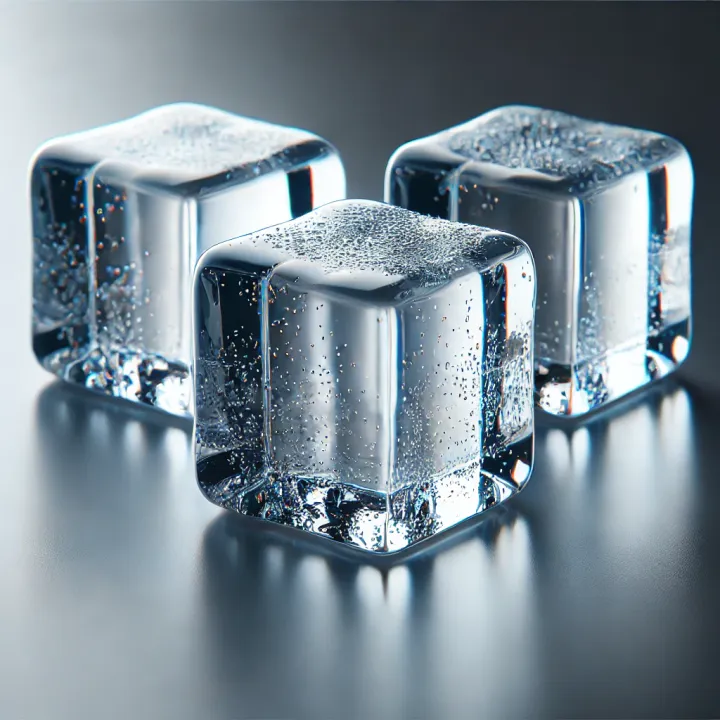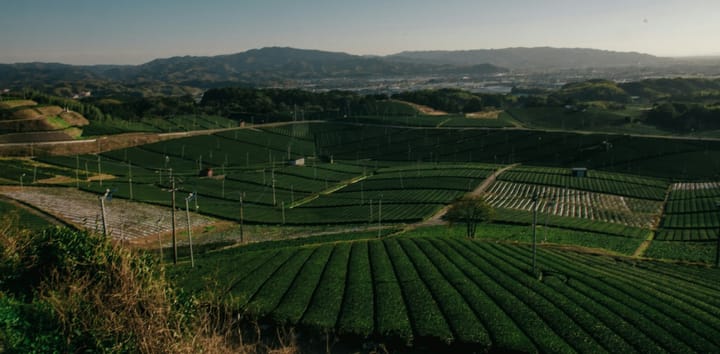The World's Most Expensive Water Sources: When Nature Commands Premium Prices
Discover the world's priciest waters from Arctic ice, deep aquifers, and ocean depths. Rare, pure, and costly due to complex extraction and shrinking glaciers, they offer a unique taste of Earth's untouched frontiers

In a world where we often take water for granted, certain sources of H2O command prices that rival the finest wines and spirits.
While many expensive bottled waters rely on crystal-adorned bottles or gold-plated packaging to justify their astronomical costs, there exists a fascinating realm where the water itself—in its purest, most elemental form—commands premium prices due to its extraordinary origin, rarity, and the extreme costs of extraction.
For discerning connoisseurs who appreciate luxury ingredients sourced from the world's most remote and pristine environments, understanding what makes water inherently expensive reveals a captivating intersection of geology, geography, and gastronomic excellence.
The Arctic's Frozen Fortune: Iceberg Water from Svalbard

The crown jewel of naturally expensive water sources comes from the remote Arctic archipelago of Svalbard, located just 1,000 kilometers from the North Pole.
Svalbarði Polar Iceberg Water is harvested from icebergs that naturally calve from glaciers into the fjords of Svalbard, representing water that is up to 4,000 years old and has never touched human civilization.
What makes this water exceptionally expensive is not luxury packaging, but the extraordinary logistics required for its collection.
The costs are high to be the world's northernmost water, as gathering icebergs just before they melt into the seas around Svalbard at 78° north is laborious.
The harvesting process requires chartering an icebreaker vessel for up to a week at sea to find the right ice in sufficiently safe conditions, expert ice selection to ensure purity, and immediate preservation to maintain the water's pristine quality.
Iceberg water being four to fifteen thousand-year-old rain/snow is very soft and neutral in taste, similar to contemporary rainwater.
Collecting the ice is done by boats, and it is essential to select the right ice, ice that has never been melted and refrozen, as such ice would contain impurities.
This meticulous selection process adds significantly to the cost, as harvesters must identify ice with perfect structural integrity while working in some of the planet's most challenging conditions.
Canada's Iceberg Alley: The Newfoundland Phenomenon
Berg water is one of only a small number of currently operating iceberg water companies, gathering individual iceberg pieces from the sea in a very manual process just before they would otherwise melt and be lost forever, sourcing from icebergs that have floated down from Greenland and are melting in the waters just offshore eastern Canada.
The Canadian iceberg water industry represents one of nature's most ephemeral luxury resources.
These ancient frozen giants, some containing water that fell as snow thousands of years ago, drift south from Greenland along what locals call "Iceberg Alley."
The window for harvesting is incredibly narrow—crews must identify, approach, and extract ice from bergs before they completely melt into the Atlantic.
A small local industry has grown up in Newfoundland producing different beverages from iceberg water including beer, vodka, and bottled water.
The rarity of this resource, combined with the dangerous and time-sensitive nature of its collection, makes it one of the world's most naturally expensive water sources.
Germany's Deep Earth Treasure: Minus 181 Artesian Water
From the depths of northern Germany comes one of Europe's most expensive naturally sourced waters.
Minus 181 derives its name from the artesian well that serves as its source, located 181 meters below ground in northern Germany.
Discovered in 2011 in the town of Parchim, this well was drilled between two impenetrable layers of ice-age clay, giving the water its remarkable purity and perfectly balanced taste with a slightly alkaline pH of 7.36.
The extraordinary expense of this water stems from the complex geological engineering required to access it.
The water emerges of its own accord due to artesian pressure and is bottled untreated in glass bottles in a small factory directly above the well.
The precision drilling through ancient clay formations, combined with the limited yield of such deep aquifers and the specialized bottling equipment required, creates a naturally scarce resource.
The water currently retails for €29 for a 681ml bottle at Fine Liquids Germany, making it one of Europe's most expensive naturally sourced waters.
Hawaii's Oceanic Depths: Kona Deep and Kona Nigari
One of the most unique expensive water sources comes not from land, but from the ocean's depths.
Two distinct Hawaiian deep-sea water products demonstrate how extreme extraction costs drive natural pricing: Kona Deep and Kona Nigari.
Kona Deep is sourced from 3,000 feet below the Pacific Ocean surface off Hawaii's coast.
This deep ocean current began its journey over 1,000 years ago when glaciers in Greenland and Iceland melted, creating a current that circles the globe and absorbs beneficial electrolytes and minerals along the way.
The expense comes from the sophisticated deep-sea extraction technology required through the Natural Energy Laboratory of Hawaii Authority (NELHA) to pump water from such extreme depths, plus the complex desalination process needed to remove salt while preserving beneficial minerals.
Even more expensive is Kona Nigari, a seawater mineral concentrate sourced from 2,000 feet below the surface.
This product costs $33.50 for just 2 ounces ($2,144 per gallon), making it one of the world's most expensive waters purely by extraction cost.
The water is marketed as a mineral supplement that must be mixed with regular water, and 80,000 bottles are shipped to Japan daily.
The extreme expense stems from the highly specialized deep-sea harvesting process and the concentrated mineral extraction technology required.
Japan's Sacred Springs: Nunobiki Falls Water
One of Japan's most beloved waterfalls, Nunobiki Falls, plays an almost fantastical role in Japanese culture.
It's known as one of Japan's three "divine falls," so its beauty is considered to be a gift from God himself.
Water sourced from this sacred location commands high prices not just for its purity, but for its cultural significance and extremely limited availability.
The expense stems from the restricted access to this UNESCO-protected site within Rokko National Park, the careful harvesting methods required to preserve the ecosystem, and the water's reputation for exceptional mineral content derived from its journey through ancient volcanic rock formations.
The Australian Wilderness: Tasmanian Artesian Springs
In Tasmania, an island off the southeast tip of Australia, 40% of the land is still covered in lush rainforest.
By drilling 20 meters into the bluestone bed, you can find clean water filtered by nature and ready to quench your thirst.
They saw the opportunity in premium water and sought out a unique source which they found in a spring in the pristine antipodean environment of Tasmania.
Tasmania's geographic isolation, pristine environment, and strict environmental protections make accessing these water sources extremely expensive.
The cost of establishing infrastructure in remote wilderness areas, combined with stringent environmental compliance requirements, drives up the price of water from these untouched sources.
The Science Behind Natural Expense
What distinguishes naturally expensive water from artificially inflated luxury products is the legitimate scientific and logistical factors that drive their costs:
Geological Rarity: Many natural bottled waters come from truly unique sources. Besides rare types of natural spring water, there are also glacier waters, rain water, iceberg water, aquifer sourced water, and many others.
This can make the price much higher than ordinary brands because transportation, measures to offset the carbon footprint, purity maintenance, and ensuring the sustainability of the sources can be expensive.
Extraction Complexity: Waters from extreme depths, whether terrestrial or oceanic, require sophisticated drilling and pumping technology. The deeper and more remote the source, the higher the extraction costs.
Environmental Stewardship: These are often small family businesses who care deeply about their sources and make great effort to preserve them for future generations. Sustainable harvesting practices, environmental monitoring, and conservation efforts add to operational costs but ensure long-term availability.
Limited Yield: Unlike municipal water sources that can produce millions of gallons, these premium sources often yield only small quantities, creating natural scarcity that drives up prices.
The Mineral Advantage
Many of these expensive water sources command premium prices due to their unique mineral profiles.
These electrically charged minerals—sodium, magnesium, potassium, calcium, chloride, phosphorus, and bicarbonate—enhance hydration, help regulate blood pressure and pH, support cardiovascular and muscular functions, aid in the conversion of nutrients to energy, and more.
According to the National Institute of Health, "high levels of calcium and magnesium in drinking water lowers the rate of certain cardiovascular diseases.
Magnesium is needed by every cell of your body, and is needed for more than 300 biochemical reactions in the body".
The Taste of Terroir
Just as fine wines express their terroir through distinct flavors imparted by soil, climate, and geography, expensive waters carry the signature of their origins.
Fine Water is a natural product with terroir that holds experiences and creates wellness.
Those minerals contribute to refreshing tasting water that lacks flatness. I would even say that artesian spring water has "body" like legs produced by good red wine.
This terroir effect means that water from different geological formations, altitudes, and environments offers distinctly different tasting experiences—a luxury that discerning palates are willing to pay for.
The Economic Reality of Premium Water Sources
Harvesting water from remote locations incurs significant expenses due to logistical challenges.
For example, Svalbarði’s Arctic expeditions yield only 13,000 bottles (15 tons of ice) per batch, making each a limited edition.
This water retails for approximately $150 USD per 750ml bottle, reflecting the high costs of Arctic operations.
Deep artesian sources like Minus 181 require substantial infrastructure investments, including precision drilling and specialized equipment from companies like Siemens Water Technologies, necessitating premium pricing to recover costs.
Quality Through Adversity
The world’s most expensive water comes from extreme environments, enhancing its purity.
Advanced millimeter wave technology enables high-quality imaging for identifying and harvesting Arctic ice, ensuring structural integrity by detecting crevices and density variations.
These cutting-edge extraction methods contribute to the water’s exceptional quality and high cost.
Sustainability Challenges
Climate change threatens premium water sources, increasing their rarity and value.
Mountain glaciers, vital "Water Towers of the World," are shrinking at 227 ± 32 gigatonnes annually, reducing glacier meltwater availability.
As pristine reserves dwindle, their exclusivity drives prices higher.
The Value of Purity
Premium water’s cost reflects its rarity, extraction complexity, and uncompromised quality, not artificial inflation.
Sourced from ancient Arctic ice, sealed aquifers, or ocean depths, these waters embody nature’s purest essence.
For culinary professionals and discerning consumers, they offer a unique connection to Earth’s untouched frontiers, delivering unparalleled authenticity and a story of adventure in every sip.


